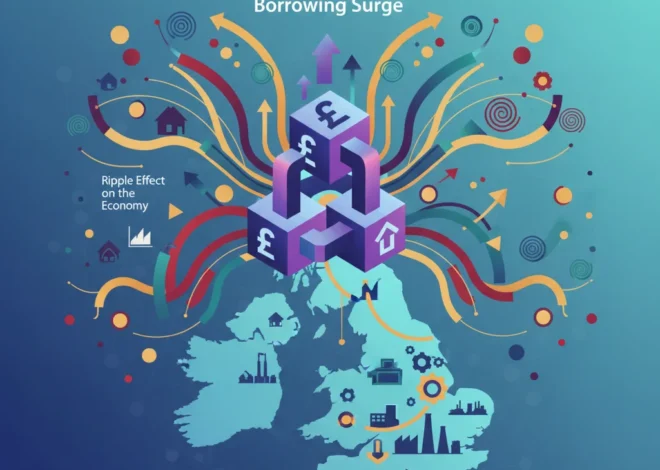
The Great Pension Offload: Why Companies Are Rushing to Sell Your Retirement Plan
In the quiet corridors of corporate finance, a seismic shift is underway. It’s a multi-billion-dollar trend that directly impacts the retirement security of millions, yet it often flies under the radar. Companies across the globe are increasingly choosing to “sell” their pension plans, offloading decades of promises to a new caretaker: the insurance industry. This isn’t a sign of corporate collapse; in fact, for many, it’s a strategic masterstroke made possible by a perfect storm of economic conditions.
For years, defined benefit (DB) pension plans—the kind that promise a set monthly income for life—have been a ticking time bomb on corporate balance sheets. But now, rising interest rates and an aggressive push by insurers have turned this long-standing headache into a golden opportunity. We’ll explore why this “great pension offload” is happening now, what it means for companies, insurers, and most importantly, for the employees and retirees whose futures depend on it.
The Fading Promise of the Corporate Pension
To understand today’s trend, we must first look back. For much of the 20th century, the defined benefit pension was a cornerstone of the social contract between employer and employee. Work for us for 30 years, and we’ll guarantee you a comfortable retirement. It was a powerful tool for loyalty and retention.
However, the financial reality of these promises became a heavy burden. Companies had to manage massive investment portfolios to fund these future payouts, exposing them to the volatility of the stock market and the complexities of long-term investing. Two major factors turned these assets into liabilities:
- Longevity Risk: People are living longer than ever, meaning pension payouts must last for more years than originally projected.
- Interest Rate Environment: For over a decade, historically low interest rates made it incredibly expensive to fund future liabilities. In simple terms, the lower the interest rate, the more money a company had to set aside today to meet a promise for tomorrow.
This led to underfunded pension plans, creating a significant drag on corporate earnings and spooking investors. The world of corporate finance shifted its focus to defined contribution (DC) plans like the 401(k), where the investment risk is transferred entirely to the employee. But the old DB promises remained, waiting for a solution.
A Perfect Storm: Why the Rush to Sell Is Happening Now
The current surge in companies offloading their pension plans isn’t a coincidence. It’s the result of a powerful convergence of economic factors, creating an ideal window for what the industry calls a Pension Risk Transfer (PRT).
1. The Interest Rate Reversal: The primary catalyst is the recent sharp rise in interest rates. After years of central banking policy keeping rates near zero, aggressive hikes to combat inflation have had a profound, and for pension plans, positive, side effect. Higher interest rates have dramatically improved the funding status of these plans. According to the Financial Times, this has made it significantly cheaper for companies to pay a one-time premium to an insurer to take over the liability for good. What was once a prohibitively expensive transaction is now an affordable and attractive strategic move.
2. The Insurer’s “Land Grab”: The insurance industry is not a passive observer; it’s an aggressive buyer. Large, sophisticated insurers see the PRT market as a massive growth engine. They are experts in managing long-term liabilities and complex asset portfolios. By acquiring these pension plans, they gain control over billions in assets, which they can invest for higher returns than the average corporate plan. This has sparked what some insiders call an “annuity-style policies land grab” (source), with insurers competing fiercely for these deals.
3. The Corporate Desire to De-Risk: For a Chief Financial Officer, a DB pension plan is a source of unpredictable volatility. Fluctuations in the market or changes in actuarial assumptions can create massive swings in a company’s financial statements. Offloading the pension removes this risk entirely, resulting in a cleaner, more predictable balance sheet. This allows management to focus on its core business operations—making widgets, selling software, or providing services—rather than acting as a pseudo-investment manager. This “de-risking” is often viewed favorably by the stock market and can lead to a higher valuation for the company.
Gatwick's Growth Grounded? How a 300% Tax Hike Threatens Billions in UK Investment
The Mechanics of a Pension Buyout
A Pension Risk Transfer is a complex transaction, but the concept is straightforward. A company with a DB pension plan calculates the total present value of all its future pension promises. It then pays a lump-sum premium to an insurance company, which in return, issues a group annuity contract. This contract legally transfers the responsibility for making all future pension payments to the insurer.
From that point on, retirees receive their monthly checks from a highly-regulated insurance company, not their former employer. To better understand the dynamics, let’s look at the perspectives of the key stakeholders.
Below is a breakdown of the benefits and potential concerns for each party involved in a typical PRT deal.
| Stakeholder | Key Benefits | Potential Risks / Concerns |
|---|---|---|
| The Company (Sponsor) | Removes volatile liability from balance sheet. Reduces administrative costs. Allows focus on core business. Can improve stock valuation. | High upfront cost (premium). Potential reputational risk if the chosen insurer fails. Fiduciary responsibility to choose a safe insurer. |
| The Insurer | Massive business growth opportunity. Acquires large pools of assets to invest. Leverages expertise in long-term risk management and investing. | Takes on longevity and investment risk. Subject to intense regulatory scrutiny. Must maintain high levels of capital reserves. |
| The Retiree / Employee | Payments are now backed by a highly regulated insurance company. Benefits are often protected by state-level guaranty associations. | Loss of connection to former employer. Customer service experience may change. Less protection from the federal Pension Benefit Guaranty Corporation (PBGC). |
The scale of this market is staggering. In the UK and US alone, the PRT market is valued in the hundreds of billions of dollars annually, with some of the largest corporate names in the world participating. This isn’t a niche financial maneuver; it’s a mainstream corporate economics strategy. Recent data indicates this trend is accelerating as more companies find themselves in a well-funded position to execute a transfer.
Kodak's Second Shot: Can a "Blue-Collar CEO" Reboot a Fallen Giant?
What This Means for You: Perspectives for Every Stakeholder
This structural shift in the pension world has different implications depending on your vantage point.
For Employees and Retirees: If you are in a DB plan that has been transferred, your primary point of contact is now an insurance company. The good news is that these companies are in the business of paying claims and are strictly regulated to ensure they can meet their obligations. Your benefit amount is locked in and will not change. However, it’s wise to understand the specifics of the state guaranty association that now backstops your annuity in the unlikely event the insurer fails.
For Investors: When a company you’ve invested in announces a PRT, it’s generally a positive signal. It indicates that management is proactively de-risking the business and cleaning up the balance sheet. This can make the company’s earnings more stable and predictable, which the stock market typically rewards. On the flip side, this trend makes the insurance sector an interesting area for investing. The companies that dominate the PRT market are experiencing significant growth in assets under management, making them potentially attractive long-term holdings.
For Finance Professionals: The PRT market is a hotbed of activity for investment banking, asset management, and consulting. The complexity of these deals requires a host of advisors to manage the transaction, from selecting an insurer to structuring the asset transfer. For those in the financial technology space, there are growing opportunities to build better tools for risk analysis, asset-liability matching, and administrative platforms for insurers managing these massive annuity books.
The AI Forgery Factory: How Generative AI Is Fueling a New Era of Corporate Fraud
The Final Word: A New Era for Retirement Security
The great pension offload marks the end of an era. The traditional model of a corporation managing a pension for life is being decisively replaced by a new model where that responsibility is outsourced to risk specialists in the insurance industry. Driven by the powerful tailwinds of the current economy, this is not a fleeting trend but a fundamental restructuring of corporate liabilities and retirement security.
While the move offers clear benefits in terms of financial stability for corporations, it also concentrates immense responsibility in the hands of a few key players. The long-term success of this new paradigm will depend on robust regulation, prudent management by insurers, and continued innovation in how we manage the financial promises of a lifetime.


